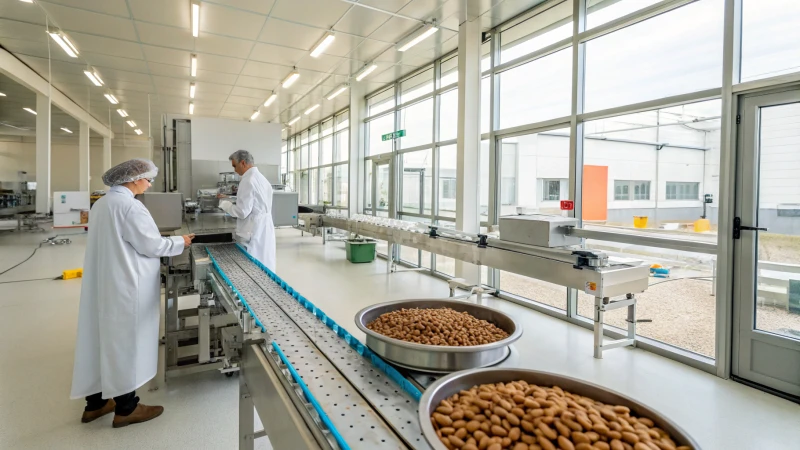
Struggling with inconsistent dog food quality and high production costs?
Producing dog food manually or using outdated equipment can lead to inconsistent product quality, hygiene issues, and skyrocketing production costs. These challenges may compromise your brand reputation and market competitiveness. However, modern dog food machines streamline the manufacturing process, ensuring uniform quality, enhanced productivity, and significant cost savings. This article provides a detailed, step-by-step guide to help you understand how to efficiently produce dog food using specialized machinery.
The step-by-step dog food manufacturing process involves raw material preparation, mixing, extrusion, drying, flavoring, and packaging. Each step is crucial to ensuring the dog food meets nutritional standards, retains texture, and maintains shelf life.
Read on to explore each step in depth and learn how optimizing this process can transform your production line.
Dog food machines are essential for large-scale, consistent dog food production.True
These machines automate critical processes like mixing, extrusion, and drying, ensuring uniformity and hygiene standards.
What Are the Key Steps in Dog Food Manufacturing Using a Dog Food Machine?
Dog food production involves a combination of mechanical and thermal processes. Understanding each step can help you optimize quality and efficiency.
| Step | Description | Purpose | Equipment Used |
|---|---|---|---|
| 1 | Raw Material Preparation | Grinding and proportioning raw ingredients (meat, grains, vitamins) | Grinder, weighing system |
| 2 | Mixing | Combining dry and wet ingredients to create a homogeneous mixture | Mixer |
| 3 | Extrusion | Cooking, shaping, and texturizing the mixture under high pressure and heat | Extruder |
| 4 | Drying | Removing moisture to ensure long shelf life | Belt dryer |
| 5 | Flavoring/Coating | Adding fats, oils, and flavors for palatability | Coating drum, spray system |
| 6 | Cooling | Bringing product to room temperature to stabilize | Cooling conveyor |
| 7 | Packaging | Packing finished dog food into bags or pouches | Packaging machine |
Step 1: How Is Raw Material Prepared?
Initial Preparation
The dog food production process starts with selecting high-quality raw materials like meat meal, corn, wheat, soy, vitamins, and minerals. These ingredients are ground into a fine powder to ensure uniformity.
Grinding & Weighing
High-efficiency grinders are used to break down the raw materials into fine particles, ensuring ease of mixing and extrusion. A weighing system precisely measures each ingredient according to the desired nutritional formulation.
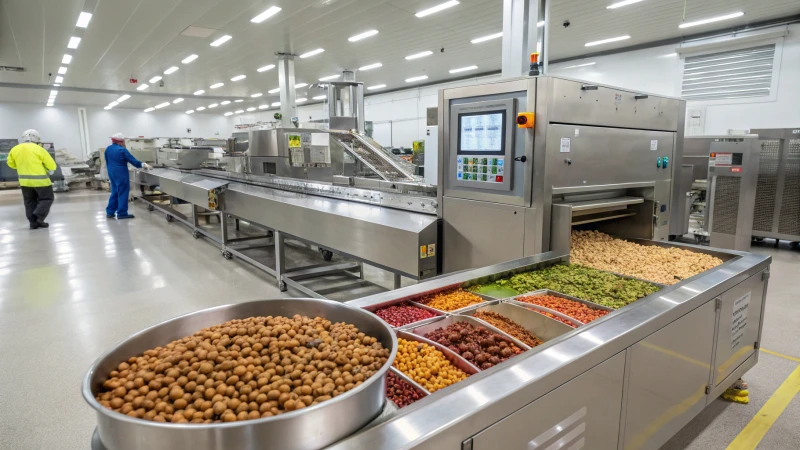
Significance
Uniform grinding ensures better cooking during extrusion and enhances digestibility. Accurate weighing maintains product consistency and nutritional balance.
Proper grinding of raw materials affects digestibility of dog food.True
Fine grinding increases surface area, aiding better cooking and nutrient absorption.
Step 2: What Happens During Mixing?
Homogenization of Ingredients
The weighed dry and wet materials are transferred to a horizontal mixer. Water, oil, and liquid additives are added during this stage to form a consistent dough-like mixture.
Role of Mixers
Advanced mixers ensure that vitamins, minerals, and flavor enhancers are evenly distributed, preventing hot spots or nutrient deficiencies in the final product.
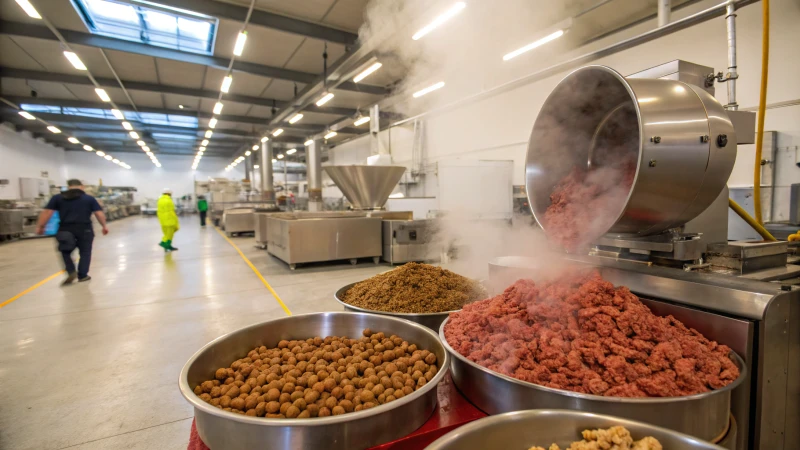
Key Points
- Mixing time and speed settings vary depending on ingredient type.
- Homogeneity is crucial for nutritional consistency and texture.
Inconsistent mixing leads to uneven nutrient distribution in dog food.True
Proper mixing ensures each kibble contains the same nutritional content.
Step 3: How Does the Extrusion Process Work?
Cooking & Shaping
The homogeneous mixture is fed into an extruder, which applies high pressure and temperature. This process gelatinizes starch, denatures proteins, and kills bacteria, making the food safe and digestible.
Die Molding
The mixture is forced through a die to shape it into desired kibble sizes and forms. The extruder allows customization of kibble texture, density, and appearance.
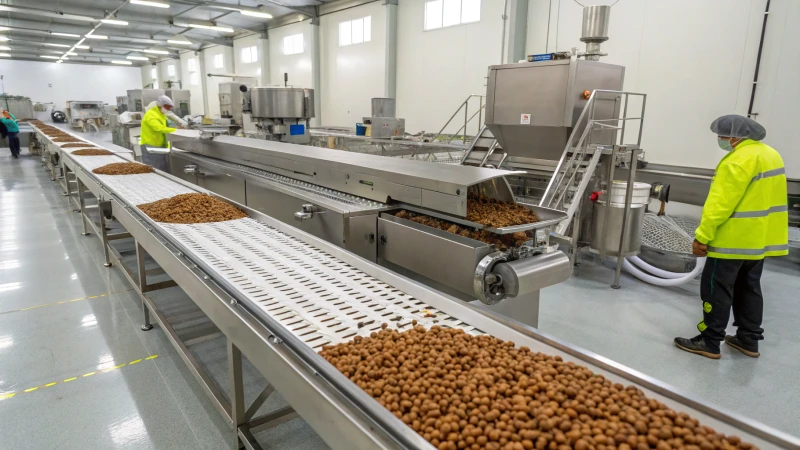
Critical Factors
- Temperature control (80°C - 160°C) is key for nutritional retention.
- Moisture levels must be balanced (typically 25%-30% before drying).
Extrusion improves the safety and digestibility of dog food.True
High temperatures destroy pathogens and gelatinize starches for better digestibility.
Step 4: What Is Involved in Drying, Flavoring, and Packaging?
Drying
The extruded kibbles are conveyed to a belt dryer, which reduces moisture content to around 8%-10%, preventing mold growth and extending shelf life.
Flavoring & Coating
Once dried, the kibble enters a coating drum, where fats, oils, vitamins, and palatability enhancers are sprayed uniformly.
Cooling & Packaging
The flavored kibbles are cooled on a conveyor to stabilize oils and prevent clumping. Finally, they are transferred to an automated packaging machine, which seals the kibbles in moisture-proof bags.
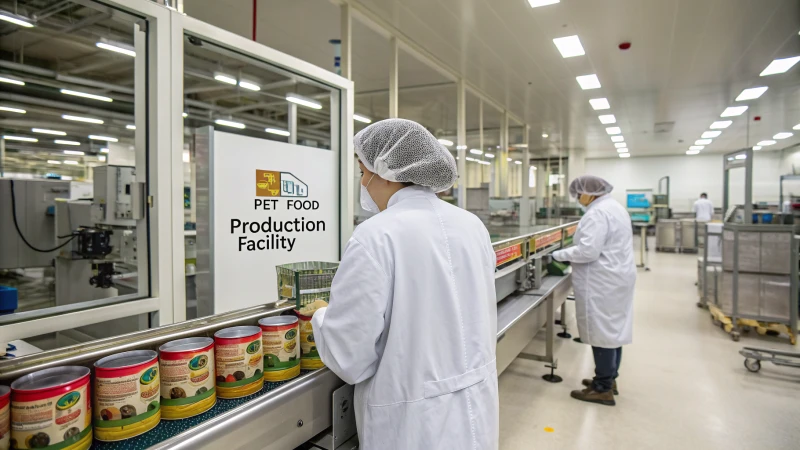
Quality Control
Throughout the process, regular sampling and testing ensure the product meets nutritional and safety standards.
Drying is crucial to extending dog food shelf life.True
Reducing moisture content prevents spoilage and microbial growth.
Conclusion
A dog food machine simplifies and standardizes the entire manufacturing process, ensuring consistent product quality, safety, and cost-effectiveness. From grinding to packaging, each step is meticulously designed to optimize output and meet nutritional standards. Investing in a well-structured manufacturing line not only increases efficiency but also strengthens your brand in the pet food industry.
Ready to upgrade your dog food production?
Contact us today to learn how our high-performance dog food machines can streamline your manufacturing process and boost profitability!
FAQ
Q1: What are the main steps in the dog food manufacturing process?
A1: The dog food manufacturing process typically involves ingredient selection, grinding, mixing, extrusion cooking, drying, cooling, coating with fats or flavors, and packaging. Each step is carefully controlled to ensure quality, nutritional value, and safety of the final product.
Q2: How does the extrusion process work in dog food production?
A2: During extrusion, the mixed ingredients are fed into an extruder where they are subjected to high pressure and temperature. This process cooks and shapes the dog food, enhancing digestibility and ensuring uniformity. The extruded product is then cut into kibble-sized pieces before moving to the drying stage.
Q3: Why is drying important in dog food manufacturing?
A3: Drying is essential to reduce moisture content, preventing microbial growth and ensuring longer shelf life. In dog food production, the dried kibbles maintain their structure, flavor, and nutritional integrity while remaining safe and stable for storage and distribution.
Q4: What role does coating play in the dog food process?
A4: After drying and cooling, dog food is often coated with palatants, oils, or nutrients to improve taste and nutritional value. This step enhances palatability, making the food more appealing to pets, and allows manufacturers to add essential vitamins and minerals post-processing.
Q5: How is dog food packaged after manufacturing?
A5: Once coated, the dog food is conveyed to packaging machines where it is weighed, sealed, and packed in bags or containers. Proper packaging protects the product from moisture, air, and contamination, ensuring freshness and safety during transport and storage.
References
- Pet Food Production Process - https://www.petfoodindustry.com/articles/8285-pet-food-production-process-overview - Pet Food Industry
- Dog Food Manufacturing Explained - https://www.allaboutfeed.net/processing/how-dog-food-is-made-step-by-step/ - All About Feed
- Understanding Pet Food Extrusion - https://www.feedstrategy.com/pet-food/understanding-pet-food-extrusion-basics/ - Feed Strategy
- Drying Techniques in Pet Food Processing - https://www.foodprocessing.com/articles/drying-and-cooling-in-pet-food/ - Food Processing
- Coating Technology in Dog Food - https://www.petfoodprocessing.net/articles/13412-enhancing-palatability-with-coating-systems - Pet Food Processing
- Packaging Solutions for Pet Food - https://www.packagingstrategies.com/articles/100847-pet-food-packaging-trends - Packaging Strategies
- Dog Food Extrusion Process Overview - https://www.extru-techinc.com/dog-food-extrusion-process - Extru-Tech
- Nutritional Considerations in Dog Food - https://academic.oup.com/jn/article/136/7/1997S/4664506 - Journal of Nutrition
- Ingredient Selection in Pet Food - https://www.petfoodindustry.com/articles/8342-choosing-the-right-ingredients-for-pet-food - Pet Food Industry
- Quality Control in Dog Food Production - https://www.ifst.org/food-safety/dog-food-quality-control - Institute of Food Science & Technology









